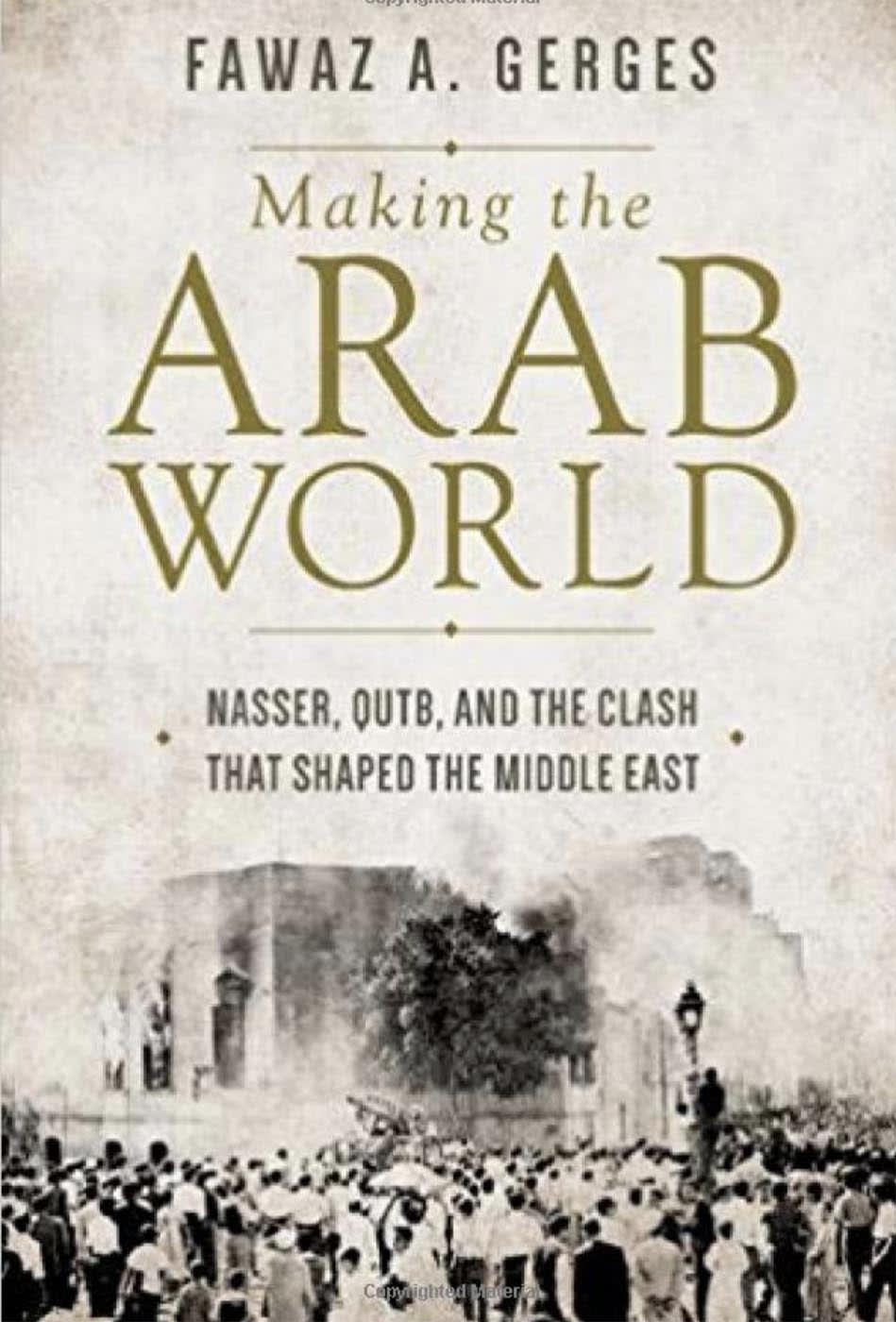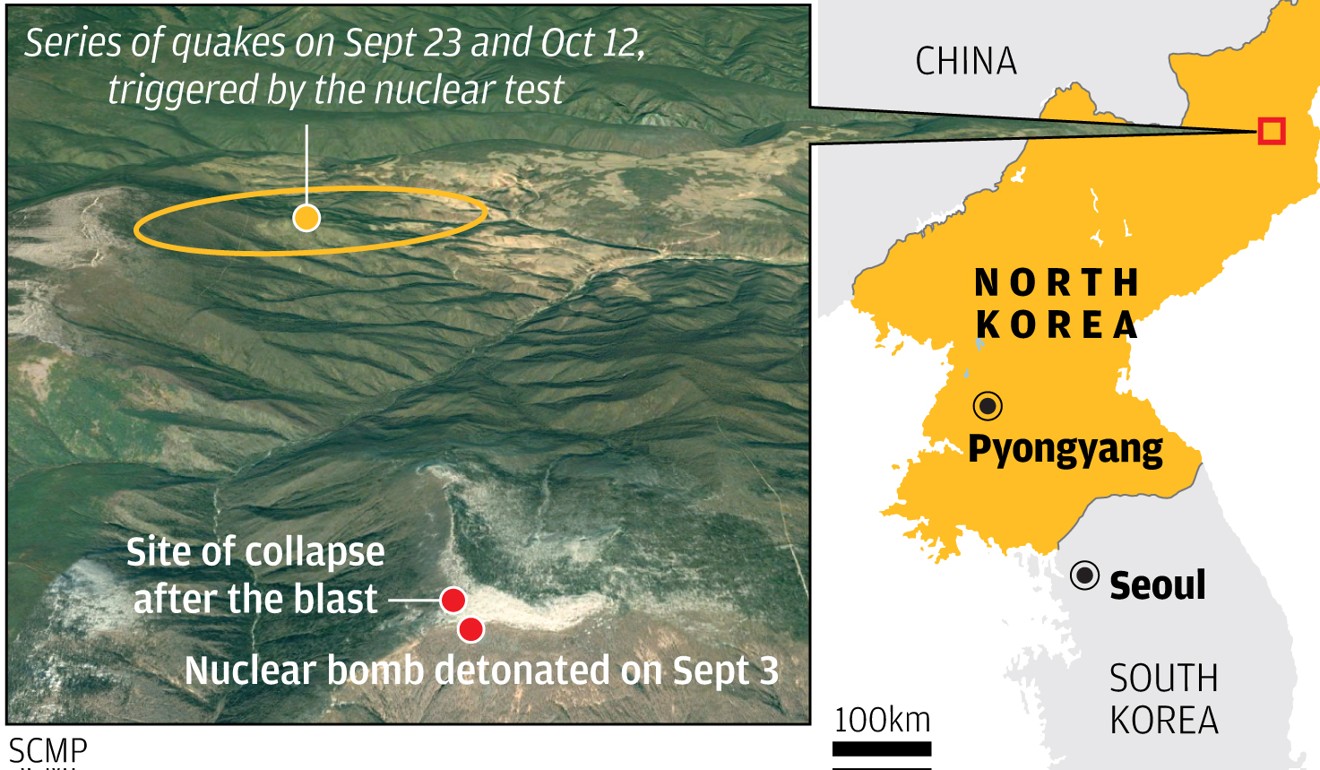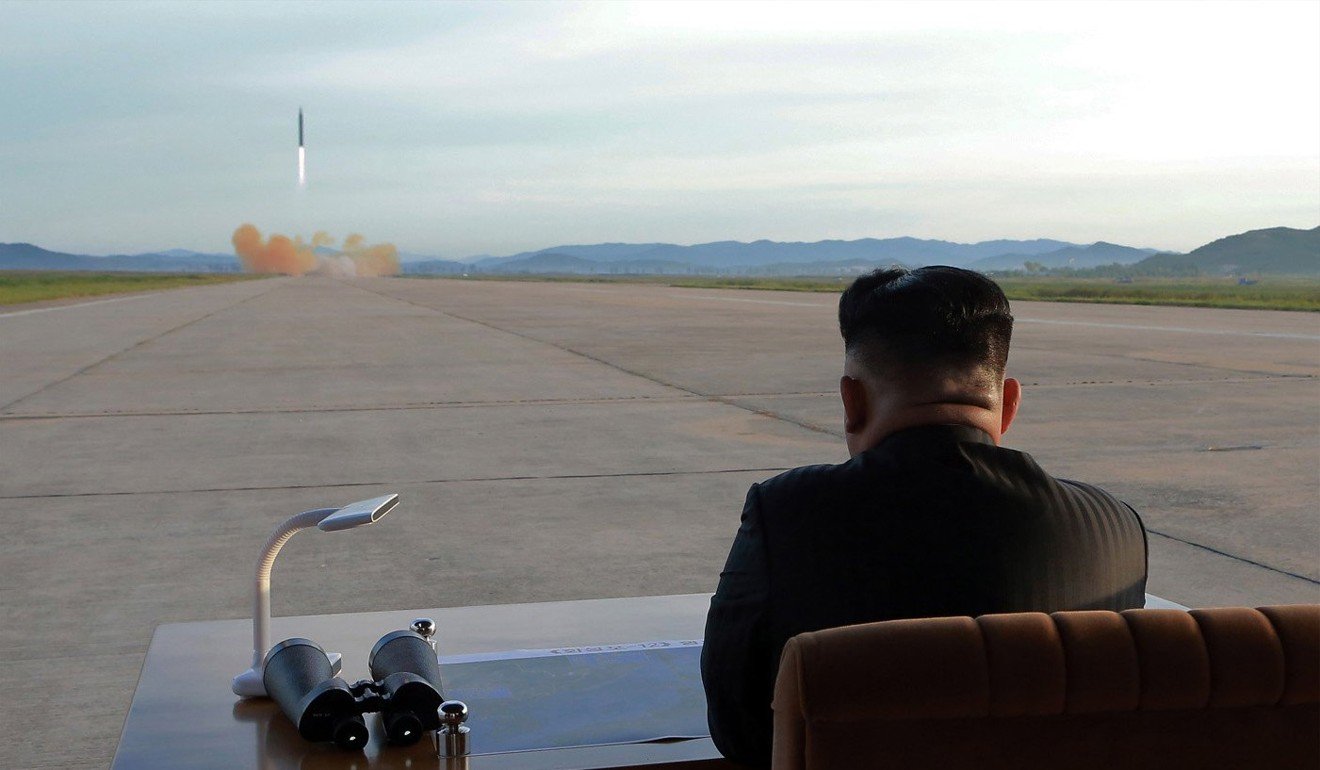 photo
photo
Before Sayyid Qutb became a leading theorist of violent jihad, he was a little-known Egyptian writer sojourning in the United States, where he attended a small teachers college on the Great Plains. Greeley, Colorado, circa 1950 was the last place one might think to look for signs of American decadence. Its wide streets were dotted with churches, and there wasn’t a bar in the whole temperate town. But the courtly Qutb (COO-tub) saw things that others did not. He seethed at the brutishness of the people around him: the way they salted their watermelon and drank their tea unsweetened and watered their lawns. He found the muscular football players appalling and despaired of finding a barber who could give a proper haircut. As for the music: “The American’s enjoyment of jazz does not fully begin until he couples it with singing like crude screaming,” Qutb wrote when he returned to Egypt. “It is this music that the savage bushmen created to satisfy their primitive desires.”
Such grumbling by an unhappy crank would be almost comical but for one fact: a direct line of influence runs from Sayyid Qutb to Osama bin Laden, and to bin Laden’s Egyptian partner in terror, Ayman al-Zawahiri. From them, the line continues to another quietly seething Egyptian sojourning in the United States—the 9/11 hijacker Mohammed Atta. Qutb’s gripes about America require serious attention because they cast light on a question that has been nagging since the fall of the World Trade Center: Why do they hate us?
Born in 1906 in the northern Egyptian village of Musha and raised in a devout Muslim home, Qutb memorized the Koran as a boy. Later he moved to Cairo and found work as a teacher and writer. His novels made no great impression, but he earned a reputation as an astute literary critic. Qutb was among the first champions of Naguib Mahfouz, a young, modern novelist who, in 1988, would win the Nobel Prize in Literature. As Qutb matured, his mind took on a more political cast. Even by the standards of Egypt, those were chaotic, corrupt times: World War I had completed the destruction of the Ottoman Empire, and the Western powers were creating, with absolute colonial confidence, new maps and governments for the Middle East. For a proud man like Sayyid Qutb, the humiliation of his country at the hands of secular leaders and Western puppets was galling. His writing drew unfavorable attention from the Egyptian government, and by 1948, Mahfouz has said, Qutb’s friends in the Ministry of Education were sufficiently worried about his situation that they contrived to send him abroad to the safety of the United States. More here from Smithsonian.
***
The Secret Islamist Society That Nurtured Jihadist Terrorism
In the ’50s and ’60s, Islamist radical and theorist Sayyid Qutb cultivated and trained a generation of Muslim radicals who would sow the seeds of ISIS and al-Qaeda.
Gerges: After the attacks on the U.S. homeland on September 11, 2001, Sayyid Qutb, master ideologue of radical Islamism and agitator, became a household name in America. He was seen as the godfather of global jihadism like al-Qaeda and an inspiration to radical religious activists worldwide. Security experts mined his writings for signposts about the drivers behind radicalization. An analyst called him “the philosopher of terror.” It has become more difficult to disentangle myths and facts about this Islamist agitator and theoretician who is mythologized by both disciples and distractors.
In contrast, my new biography of Qutb presents a more complex and multidimensional personality than has usually been presented, whose legacy is often deliberately misinterpreted by Islamists themselves. While Qutb’s writings have been debated by scholars,[i] his life in prison between 1954 and 1964 and in the underground has not been fully and critically examined. The prison years are pivotal. His decade-long experience in the prison camps radicalized him and convinced him of the urgent need to overthrow the secular order and replace it with a system firmly grounded in the Qur’an.
As one of Qutb’s devoted jail companions, Sayyid Eid, put it, “The prison years transformed Qutb’s thinking and writing. He turned his pen into a deadly weapon against what he called the tawagheet [tyrants] and aimed at awakening the ummah [worldwide community of Muslims] from its prolonged slumber.”
It is behind the bars of Nasserist jails that Qutb constructed his subversive manifestos that promoted an alternative revolutionary Islamist project and attempted to put it into practice. From November 1954, when he began a 15-year sentence, Qutb worked on radical amendments to his multiple-volume commentary on the Qur’an called In the Shadow of the Qur’an. Representing a rupture with his previous moderate views, this new and firmly ideological outlook emphasized revolutionary Islam and the inevitability of the confrontation with jahiliyya, a term historically used to refer to the spiritual ignorance of Arabian society prior to the arrival of Islam. Qutb drew a direct line between the “the old jahiliyya of the Arabs” with what he called al-jahiliyya al-haditha, the modern jahiliyya.
Qutb defined jahiliyya as a deviation from the worship of One God. He made a correlation between the Egypt in which he lived and the environment in which the Prophet Muhammad had first spread the message of Islam. To this end, he took a radical step in categorizing contemporary Egyptian society as jahili.
If jahiliyya amounted to the servitude of humans to other humans, for Qutb, true Islamic life involves total submission to God. Qutb preached that Islam would ultimately prevail but its triumph would not occur simply by virtue of its revelation by God but rather through a group of people understanding the task, believing in it completely and conforming to it as closely as possible.” Qutb called for the creation of a Qur’anic generation which would act as a vanguard “to point out the road of salvation to humanity and to build the road as well.”
Qutb and Al-Tanzim al-Sirri
This is all familiar by now. What is little known is that from the second half of the ’50s, Qutb embarked on a mission, while in prison, to recruit fellow Islamist prisoners and to rally them to his revolutionary cause. He was in a paramilitary organization subsequently named al-Tanzim al-Sirri (the Secret Organization) by the Egyptian authorities. Qutb provided ideological and practical guidance to operators who numbered in the hundreds inside and outside prisons. According to his disciples, Qutb’s goal for agreeing to be in charge of al-Tanzim was to protect the Islamist movement and ultimately topple the Nasser regime and Islamize state and society. The historical importance of al-Tanzim lies in that it served as a template for subsequent underground jihadist organizations. Qutb’s revolutionary ideas and actions continue to resonate with radical religious activists worldwide, even though there is no straightforward line between the pioneer Islamist agitator and today’s wave of Muslim extremism.
In the summer of 1965, Nasser’s security forces accidentally discovered al-Tanzim after a member they arrested exposed the underground organization. Qutb and his men lost the fight before “firing a single shot,” as one of his young lieutenants Ali Ashmawi put it. The authorities acted swiftly and aggressively to dismantle al-Tanzim’s cells and to complete the destruction of the Brotherhood. After al-Tanzim was exposed and its members arrested, Qutb took full responsibility for his operational role trying to shield his disciples and followers. In his last testament, Why They Executed Me, he implied that his goal had been to bear the brunt of the burden and to minimize the costs to al-Tanzim’s members.
The Egyptian government used confessions extracted under torture from members of al-Tanzim to indict both Qutb and the Brotherhood leadership. Qutb and al-Tanzim’s six top lieutenants were sentenced to death. According to Nasser’s chief of staff, Sami Sharaf, Nasser had taken a particularly strong line. “Nasser said that executing Qutb would deal the Ikhwan a mortal blow, as well as any future counterrevolution by religious fanatics,” he said. Thousands of members of the Muslim Brothers, including senior leaders, were arrested, allegedly tortured, and given long jail terms. “We wanted to bury the Ikhwan, period,” confessed Sami Sharaf. “Our goal was to remove the cancer from the Egyptian body politic.”
Over a two-year period, I spent countless hours attentively listening to Qutb’s surviving contemporary disciples and his right-hand men in al-Tanzim al-Sirri (the Secret Organization) who joined his underground network and spent years by his side in and out of prison. Reminiscing about their past moments with him, they confided what had transpired behind prison walls and drew an intimate portrait of the radical Islamist theoritician. They told me about Qutb’s antipathy to Nasser and his desire to rid Egypt of its faroun (tyrant). Having spent years with him in the solitude of prisons and outside, Qutb’s disciples are best positioned to clarify the background, intentions, and implication of some of his controversial terms and his vision in general. This small circle of followers were his eyes and ears and would have sacrificed their lives for him, as they have indicated.
Those old men in their seventies and eighties introduced me to a younger Qutbian generation that seeks to carry the revolutionary torch forward. Time and again, I was told by Qutb’s followers that by the late ’50s their mentor was essentially in charge of the Brotherhood and tried to revolutionize the timid Islamist organization. Although in 1966 Nasser hoped to extinguish the Qutbian fire by sending Qutb to the gallows, his “martyrdom” provided the fuel that has powered several jihadist waves, according to his contemporary disciples. Qutb’s loyalists say that he knew that his blood would be a curse to haunt Muslim tawagheet (tyrants) and to quench the thirst of the ummah (the global Muslim community) for sacrifice and cultural and political renewal.
I have extensively relied on these firsthand interviews, recollections, and memoirs of Qutb’s contemporaries to reconstruct his life journey—from a public intellectual with a secular mentality to a revolutionary Islamist. My uninhibited access to Qutb’s most inner circle and that of the Brotherhood’s old guard and younger activists provides a unique window into a shadowy, secretive universe, allowing my biography of Qutb to zero in on these prison years and trace his footsteps and actions, thus filling a major gap in the literature.
My interviews with al-Tanzim’s key lieutenants illuminated Qutb’s role in the organization explaining the influence of prison and torture on his ideological transformation between 1954 and 1965. Moreover, Qutb’s contemporaries elaborate on the relationship between al-Tanzim and the rest of the Brotherhood and the extent to which the rift haunted the Islamist group in the following decades. These illuminating conversations highlight what has been a mysterious presence in discussions of the relationships between the Muslim Brotherhood and the Nasserist state, but more importantly, they offer a new dimension to understanding the influence of Qutb and the transformation that he underwent during the prison years from 1954 till 1965.
The stirring of militancy from the ruins of the Brotherhood
In the early ’50s, the Brotherhood represented the largest social force in Egypt. Thus, when the Free Officers clamped down on the Islamist organization in 1953-1954, this confrontation ultimately morphed into a prolonged struggle between secular-leaning Arab nationalism represented by the Nasserist state and an emergent radical Islamist current led by Sayyid Qutb. After Nasser launched first wave of mass arrests against the Muslim Brothers in mid-January 1954, it only took the Islamist group a short while to get up and running again despite the imprisonment of thousands of its senior leaders and members. By June of that year, there were already reports of a revival of Brotherhood activism with the intent of securing the survival of the organization.
In the midst of the 1954 clampdown, the dominant view among senior Muslim Brotherhood, led by the General Guide Hasan al-Hudaybi, was that the organization should endeavor to absorb the shock and wait for more favorable political conditions. Meanwhile, the imprisoned members were already plotting their next moves against the state. A divide between the traditional leadership and the lower-rank members was now gradually developing. The Brothers were angry and bitter because they felt betrayed by Nasser who, without the organization’s support, would have not been able to seize power in 1952. As frustration deepened among some imprisoned Brotherhood members, their resentment increased against their own leadership for its quietism and the prisons thus became a key forum for activism.
Moreover, those who had not been caught up in the crackdown did their best to continue their activities under the oppressive new conditions. One of them was Ahmed Abdel Majid, who was both a member of the Brotherhood and an officer in the Egyptian military intelligence service during the prison years. “After the Nasser regime dismantled the Ikhwan [Islamist movement]—young men— sought to absorb the shock and plot our next moves,” he confided. “Initially, there existed no centralized authority. Each unit did its own thing. Others prayed together and talked politics… In the first two years, we kept a very low profile and refrained from recruitment outside our closest circles,” he explained. Although similar efforts were underway elsewhere, they remained organic and dispersed. “We had no idea that throughout the country other young Egyptians had organized themselves in similar cells and shared our goal,” added Abdel Majid, who was a founding member of al-Tanzim. Therefore, the repression exerted by the Nasserist state only hardened attitudes among some sections of the Muslim Brothers and supporters, both inside and outside the prisons.
The Emergence of al-Tanzim
This context is important to understanding the emergence of al-Tanzim. It formed out of units created by some of those who had remained at liberty after the 1954 clampdown and who were determined to continue their armed activism. Gradually, al-Tanzim developed into a somewhat coordinated paramilitary operation, concentrated in urban areas like Cairo and Alexandria. In the late ’50s, as various cells began to link up with one another, they soon realized they needed to put forward a clear vision or road map for the future.
Al-Tanzim’s beginnings were humble. With the dismantling of the Brotherhood’s institutions and networks, followers and supporters had lost their political equilibrium and they sensed danger. Undeterred by the Nasserist state’s concerted effort to destroy the Islamist group, and with hardly any financial backing or military experience, these young activists took great risks in an uncertain bid to unseat Nasser. The power of ideas is key to understanding their self-conscious action, regardless of how reckless and suicidal it may seem to outsiders. The lesson we can draw from al-Tanzim is still relevant to understanding the rise of paramilitary Islamist groups today, insofar as it speaks to the marrying of radical religious ideas with a sense of injustice, victimhood, and persecution.
The first emir (leader) of al-Tanzim was Abdel Aziz Ali, a former army general and minister who was one of the heroes of the 1919 revolution against the British. However, he was still very much wedded to the old ways of thinking and acting. Al-Tanzim’s lieutenants, in contrast, were ambitious, impatient, and determined to pursue the riskier strategy. They thus searched for a charismatic leader with the capacity and the temperament to make their nascent organization more effective. It was at this stage, having become disillusioned with Abdel Aziz and having been turned down by Abdel Khaleq, that members of al-Tanzim began to put out feelers to Qutb. “The key word was ‘inspiration.’ We searched for a leader who would inspire us and educate us about the duties and responsibilities of jihad,” said Abdel Majid, who was head of al-Tanzim’s intelligence committee. “We were less interested in military and intelligence drills, and more so in theological and ideological renewal and transformation. Sayyid Qutb was an inspirational role model who could empower our nascent jama’a [the community].”
To their delight, al-Tanzim’s lieutenants were able to get in touch with Qutb in prison in the late ’50s via two women who acted as intermediaries: Qutb’s sister Hamida and an audacious Ikhwan activist called Zeinab al-Ghazali. Having thus made contact with Qutb, al-Tanzim’s operatives pleaded with him to be their leader and pledged to swear bay’a to him. “We were elated when word reached us that Qutb had consented to our request,” recalled Abdel A’l Aw’d Musa, an intense 76 year old who was then in his twenties and who established one of the first underground cells outside Cairo.
Before Qutb joined, al-Tanzim had consisted only of disconnected underground cells. With Qutb at the helm, a coherent and unified organization emerged, and the goal shifted from the ouster from power of Nasser and his inner circle to the transformation of society as a whole.
From Qutb’s viewpoint, the decision to offer “guidance,” as he noted in his confessions, to the organization’s young members bordered on suicidal. Sayyid Eid, the prison companion, recalled Qutb saying that he fully expected to be killed by the Egyptian authorities and that “Al-Shahid [the martyr] acted and behaved as if he was destined to be martyred at any moment,” recalled Eid. As Shazili and others noted, Qutb was not a traditional critic or a theorist confined to an ivory tower. “Qutb did not only theorize about the urgent need for a vanguard but devoted the last decade of his life to building a real vanguard,” explained Abdel Majid al-Shazili, who was in charge of a branch of al-Tanzim in Alexandria during this period, during one meeting in his apartment in Alexandria.
Pressed on the question of whether Qutb sanctioned the use of violent means to effect political change, Ashmawi, the young lieutenant, responded: “Yes, Qutb aimed at violently overthrowing the whole social and political order, not only the Nasser regime.” Furthermore, according to Ali Ashmawi, who was an operational commander, Qutb also played a pivotal role in the education and indoctrination of al-Tanzim’s cadres. “Before we connected with Qutb, we were theologically naive, blind and deaf, feeling our way in the darkness,” he said, with a loud laugh. “He opened our eyes and ears to the truth and showed us the way.” Qutb was able to endow al-Tanzim with a theological vision based on his own interpretation of the Qu’ran for the transformation of Egyptian society. Qutb’s texts were smuggled out of the prison and distributed to the five men of the leadership committee of al-Tanzim who would then spend hours studying Qutb’s words.
The Brotherhood Divided
From the second half of the ’50s until his temporary release from jail on health grounds at the end of 1964 at the behest of the prime minister of Iraq, Abdel Salam Arif, Qutb embarked on a mission to recruit fellow Islamist prisoners and to rally them to his revolutionary cause. Having suffered from breathing problems before he was imprisoned, he spent most of his years of incarceration in prison hospital facilities. During a spell in the Tura prison hospital, he interviewed scores of visiting cellmates from various prisons, particularly al-Qanatir, to find out who would be receptive to his revolutionary ideas. He succeeded in recruiting dozens of prisoners to his underground project. Although Qutb’s followers were a minority—nearly one hundred members among the incarcerated Muslim Brothers, who numbered in the low thousands—their very existence shattered the unity of the Islamist group and exposed internal ideological and doctrinal fault lines.
Throughout this time, Qutb never requested authorization from the Brotherhood leadership to recruit imprisoned members to his cause. He went to great lengths to mask his proselytizing efforts from the top leaders of the movement, and when they confronted him, he denied converting detainees. By covertly recruiting prisoners to his revolutionary scheme, Qutb went against the ethos of absolute obedience to the hierarchy that had long been a core principle of the Islamist organization. He possessed no official function or authority to replace the Brotherhood’s worldview with his own interpretation.
Senior leaders were appalled when news reached them that Qutb had been preaching subversive ideas to the rank and file. The most alarming news was his idea of takfir (excommunication), including the whole of Egyptian society: the state, ordinary people, and the ulama. Faced with this new challenge, the Brotherhood leadership grilled Qutb and demanded that he refrain from spreading fitna (sedition).
“A fitna almost tore apart the ranks of the jailed Ikhwan,” acknowledged Abdel Khaleq, Hudaybi’s trusted man. But he claimed that “the supreme guide swiftly cautioned Qutb against any unauthorized teaching and preaching, and nipped the fitna in the bud.” According to Abdel Khaleq, who as Hudaybi’s right-hand official was privy to the confrontation, Qutb disavowed such heretical views and insisted that he only taught prisoners Qur’anic lessons. “He was agreeable and nonconfrontational, seeking to dispel suspicions that he had gone rogue,” Abdel Khaleq said.
In contrast, Sayyid Eid, who was in Qutb’s camp, said that his mentor’s seemingly conciliatory stance was but an artifice. “We [both sides] put the best face on a dangerously embarrassing situation. Qutb had a low opinion of the tired old men of the Ikhwan who suffered in silence at the hands of Nasser and who willingly refused to resist oppression and injustice. He viewed them as being out of touch with the emancipatory and revolutionary power of ‘aqida,” Eid told me. “Sayyid Qutb had contempt for the Ikhwan political leadership, whom he derisively called functionaries,” he added. “He dismissed them as stupid and spineless, status quo men.” Despite his reassurances to Hudaybi and other Muslim Brothers, Qutb had unambiguously excommunicated Nasser. According to Eid, Hudaybi’s intervention did little to calm the dissidents. “Far from it,” he said. “Dozens of Ikhwan members, including myself, were steadfast in their support of Qutb’s defiance of the Nasser regime and the need to build a vanguard to carry out an Islamist revolution.”
In prison Qutb enlisted Muslim Brothers over the heads of their “legitimate” leaders and drove a wedge into the heart of the Islamist movement. Those who looked up to him for inspiration and guidance distanced themselves from the formal institutions of the mainstream Brotherhood, which caused a serious rift between Qutb’s men and other prisoners. According to Ahmed Ra’if, a well-placed member of the Brotherhood who was in contact with both camps at that time, the internal divide even poisoned the atmosphere in more than one jail. The two sides bickered so bitterly and intensely that Hudaybi issued a directive from his prison cell calling for a cessation to the hostilities, although neither camp adhered to a ceasefire and skirmishes frequently occurred.
Meanwhile, Qutb continued to disseminate his ideas during daily lessons to the prisoners. According to attendees, these primarily focused on two themes: ‘aqida (Islamic doctrine), and siyasa (politics). Qutb reminded his disciples that if they harnessed the hidden power of ‘aqida, they would be emancipated and fearless; they would become closer to God and act as his faithful agents in reinstituting a just and pure Islamic order on earth. “His aim was to transform members from mere religious activists into revolutionaries to confront the internal and external enemies of Islam,” confided Eid. “He made new men out of us, armed us with ‘aqida and summoned us to reestablish Islam in its purity and beauty in a similar way to that of the early Muslims.”
Eid’s recollections testify to the power of Qutb’s message, written especially for the youth who he hoped would spearhead the coming Islamist revolution. “Unfettered by previous conventional interpretations of the Qur’an, Qutb offered his own interpretation in a straightforward and accessible style and addressed us in captivating language that resonated with all of us,” Eid recalled. “My eyes welled with tears when Qutb dictated some passages of his masterpieces, Signposts and his Qur’anic exegesis,” said Eid, who transcribed books that Qutb dictated to him during their time together in prison. “I and many others felt that he was giving expression to our deepest aspirations and fears about the plight of Egypt and the ummah, and the threat posed by renegade rulers and their masters—crusaders and Zionists.”
The hardening of attitudes among some Muslim Brothers members translated into a determination to take practical steps to strike violently at the Nasserist state. Some of those who had moved in these circles at that time, whether inside or outside of prison, told me that they had wanted to kill Nasser and his close aides. More ambitious members had visions of overthrowing the regime as a whole and replacing it with a Qur’an-inspired government. A common thread among these newly radicalized recruits was visceral hatred of Nasser and what he represented.
“We wanted to pull Nasser’s junta up by its roots and liberate our Ikhwan brethren from captivity,” recollected Ali Ashmawi, who took steps to achieve these ends and planned to kill Nasser. “Initially, our aim was to prevent the Ikhwan organization from disintegrating and to prepare the ground for a future uprising against Nasser and his thugs. We wanted organizational continuity but with new blood and fresh faces unknown to the security services.”
Of all al-Tanzim’s lieutenants and foot soldiers, Ashmawi was the most forthcoming about the history of the organization because he had little to lose, having been demonized by the Brotherhood for breaking down under torture following his arrest in 1965 and exposing his co-conspirators. His old cohorts have never forgiven this “human act of weakness and treachery,” as he put it, although he assured me that when he found himself sitting next to Qutb in a courtroom some weeks after their arrest, the latter showed empathy for his plight. “I explained to him that the Ikhwan abused me and treated me like a pariah in prison. Qutb reassured me that he understood my predicament and that blaming the victim is wrong. ‘Nasser’s security men are the villains, not you,’ [he] added with a gentle smile on his face,” according to Ashmawi.
Ashmawi’s narrative is significant for this study as he was present at the birth of al-Tanzim and served as its military field commander. His is the most unscripted, comprehensive, and revealing voice on the issues at stake, and the least constrained by any existing connections with the Brotherhood. Most of Ashmawi’s recollections are corroborated by other members of al-Tanzim and independent sources.
Others who moved in these circles at the time also confirmed the shift to more militant views that was then under way. “We could not be passive while our brethren were being unjustly abused and oppressed,” said Ahmed Abdel Majid. “That would have violated one of the fundamental tenets of our religion; resisting injustice and defying renegade rulers.” Beyond the question of vengeance and a perceived duty to defend their oppressed co-religionists, taking action against Nasser under these circumstances was also seen as necessary in order to defend Islam itself. “Once Nasser’s regime persecuted the Ikhwan, it became obligatory for us to step forward and defend Islam,” said Abdel Majid. Challenged on his implicit assumption that the Brotherhood could be directly equated with Islam per se, he responded that “the Islamist movement is the guardian and protector of Islam… If you target its sons, you are harming Islam and hindering its growth.”
More and more former disciples of Qutb told me their priority had been to eliminate Nasser: “We concluded that Nasser must go. We wanted to kill the devil and rid Egypt of him,” agreed Abdel A’l Aw’d Musa, who was introduced to me by Abdel Majid. The two men knew each other from al-Tanzim and became best friends while in prison. “Blinded by hatred and revenge, many of us pledged to assassinate Nasser and be martyred in the process,” added Aw’d, who, as mentioned previously, was in charge of an underground cell which, although initially designed to assist the families of incarcerated Ikhwan members, became tasked with the more ambitious goal of subverting the Nasser regime. “My unit’s fundamental goal was to kill Nasser and avenge our persecuted Brethren,” he explained. “We recruited between fifty and seventy fit young men, raised one thousand pounds to carry out the operation, and trained and readied ourselves for an opportune moment.” The cell selected Alexandria as an ideal location and developed a plan to position three separate assassination teams armed with automatic weapons.
However, as division over whether it would be better to assassinate Nasser or overthrow the regime hardened, the plan never came to fruition. “As we talked to other members who had also organized themselves in small paramilitary units, our plot met with stiff resistance and opposition from senior leaders who warned against rash actions inspired by vengeance and emotion. We were told that killing Nasser would not dramatically change the system and that a like-minded secular dictator would replace him. It was not easy to postpone our short-term goal of punishing Nasser for his crimes, for the greater good of overthrowing the corrupt, decadent regime,” explained Aw’d. “While debating the decision with our Brothers, we cried and prayed for inspiration and wisdom. What you need to comprehend is that Nasser hurt us badly and left deep scars in both our souls and our bodies,” he emphasized.
Allergic to the accusation that radical Islamism sprang from within their ranks, contemporary Brotherhood leaders deny even very existence of al-Tanzim as an armed force. “Why do you keep quizzing me about Qutb’s al-Tanzim?” Mahmoud Izzat, a 70-year-old multimillionaire who currently runs the organization in exile, demanded of me angrily, arguing that “the whole thing is a Nasserist construction invented by his intelligence thugs to use as a bludgeon against the Ikhwan,” he assured me. Others within the Islamist group, while acknowledging the existence of al-Tanzim, deny that it ever had the blessing of the leadership. Senior official Abdel Khaleq continually insisted that the senior leadership, particularly the General Guide, had not sanctioned Qutb’s paramilitary organization. “Hudaybi’s hands had already been burned, and he would not let a few well-meaning and excited activists ignite a fire that would destroy the organization,” he insisted.
Although Qutb kept his recruitment of followers inside the prisons, radical activist Zeinab al-Ghazali Ghazali seems to have acted as an intermediary between Qutb and Hudaybi, the General Guide, thus pointing to some kind of awareness and approval of the existence of al-Tanzim by the Brotherhood’s top leadership. The nature of this relationship goes to the very heart of a broader question regarding whether al-Tanzim was a paramilitary arm of the Brotherhood or an independent venture undertaken by young dissidents. From the time of the exposure of al-Tanzim in 1965, the Egyptian authorities launched a propaganda offensive aimed at undermining the Islamist group as a whole asserting that al-Tanzim was its affiliate. Against this background, officials of the Brotherhood have repeatedly denied that the broader movement and its leadership played any formal role in al-Tanzim and have accused the Nasserist state of manufacturing evidence.
Primary evidence suggests that Hudaybi did in fact sanction al-Tanzim. Abdel Majid recalled that after Abdel Khaleq, the General Guide’s trusted man, had refused to take charge of the organization, its members had approached Hudaybi directly to seek his approval. “We could not have moved forward without the authorization of the supreme guide because we needed religious legitimation,” said Ali Ashmawi. The young lieutenant. “We sought and promptly received Hudaybi’s approval.”
All surviving members of al-Tanzim say that from the outset, Qutb himself had refused to head the underground group unless he obtained an official decree from the General Guide. These contradictory internal accounts are unsurprising given that the Islamist organization was in a state of virtual paralysis. Hudaybi wanted to have it both ways: to shield the political organization against accusations, while keeping his options open with regard to the possibility of militarily confronting the Nasserist state.
The Clampdown on al-Tanzim
For his part, Qutb assured his disciples that his death would in fact serve as a catalyst for his cherished Islamist revolution. There are many accounts of the final hours leading up to Qutb’s execution on August 29, 1966. A common thread that runs through these stories is that Qutb went to the gallows with no hesitation or regret. From interviews with his disciples, a portrait emerges of the man as a crusader who was unafraid to die for his beliefs and in fact welcomed martyrdom. Well versed in Islamic history, Qutb knew better than Nasser the enduring and powerful role that iconic symbols and martyrs have played in Islamic tradition. One of the few images that exist of Qutb on the day of his hanging shows him with a smile on his face.
Qutb was buried in an unmarked grave in al-Qarafa al-Kubra (the Great Cemetery) but has remained alive in the minds and hearts of Islamists worldwide, endearingly referred to as al-Shahid al-Hayy (the living martyr). “Qutb’s words have a special resonance due to his steadfastness in the face of tyranny,” said Shazili, who would eventually be imprisoned after al-Tanzim was crushed in 1965; he spent almost a decade behind bars. “By practicing and living what he preached, he set an enduring model for future generations of religious dissidents.”
Conclusion
The relationship between Qutb and the Brotherhood was fraught with tensions and contradictions. Qutb was an outsider, a belated convert to the cause. Only 18 months after his official joining of the Islamist group in 1953, he was arrested and Qutb never really developed institutional links within the Brotherhood. A maverick with a volatile character, he was not the type to toe the party line.
According to his disciples, Qutb saw himself as guiding the Islamist caravan in the right direction and rescuing Islam from oblivion. His attempted coup against the Brotherhood shows the extent of his ideological transformation as a revolutionary Islamist theorist and ideologue, and his determination to bring about real change. He aimed at dismantling all existing institutions, including his own mainstream Islamist group. This fact does not match the emphasis typically placed by Qutb’s biographers on continuity over discontinuity, and their tendency to portray Qutb as simply an extension of the Brotherhood institutional family.
What emerges from Qutb’s formative years and early adulthood was his quest for recognition and deference, no matter which circles he navigated. Unsuccessful in the literary scene and with the Free Officers, his new reinterpretation of Islam finally won him the recognition for which he had so urgently strived. In his own writings, the carefully crafted image of Qutb is that of a prophet-like, selfless man whose total embrace of Islam allowed him to reestablish the sovereignty of God on earth (hakimiyya). In this context, it is unsurprising that the political struggle between the Nasserist state and the Qutbian Islamists has come to be invested with existential overtones. With both camps repeating mirroring narratives of the Other as an existential threat, violence became the norm.
Unfortunately, this vision is still a prevalent feature of Arab politics and has contributed to the rise of waves of radical jihadists, including Al-Qaeda and the Islamic State. This initial framing of the struggle as existential has been recycled by subsequent generations of religious activists and nationalists. Today this fierce struggle plays out in Egypt, the most populous Arab state, and in neighboring Arab countries. In their quest for power, both Nasser and the Brotherhood laid the foundation for an articulation of politics and of the relationship between ruler and people as strictly unitary and autocratic, thus paving the way for the institutionalization and normalization of one-party authoritarian rule and religious extremism.
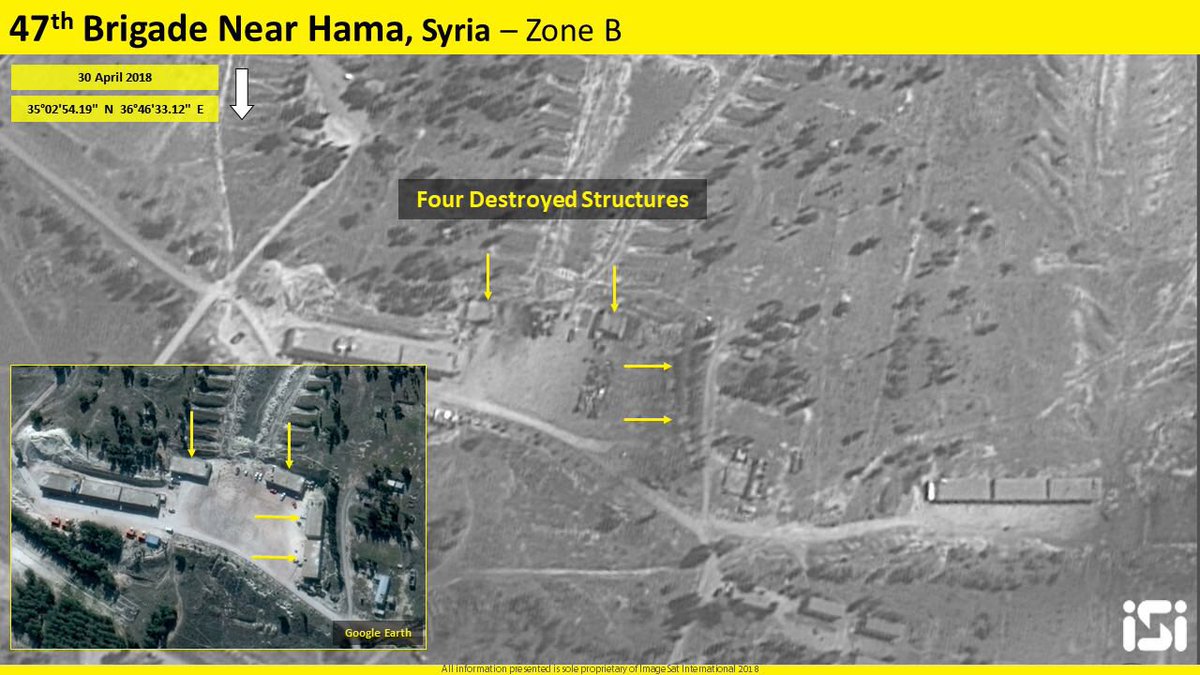
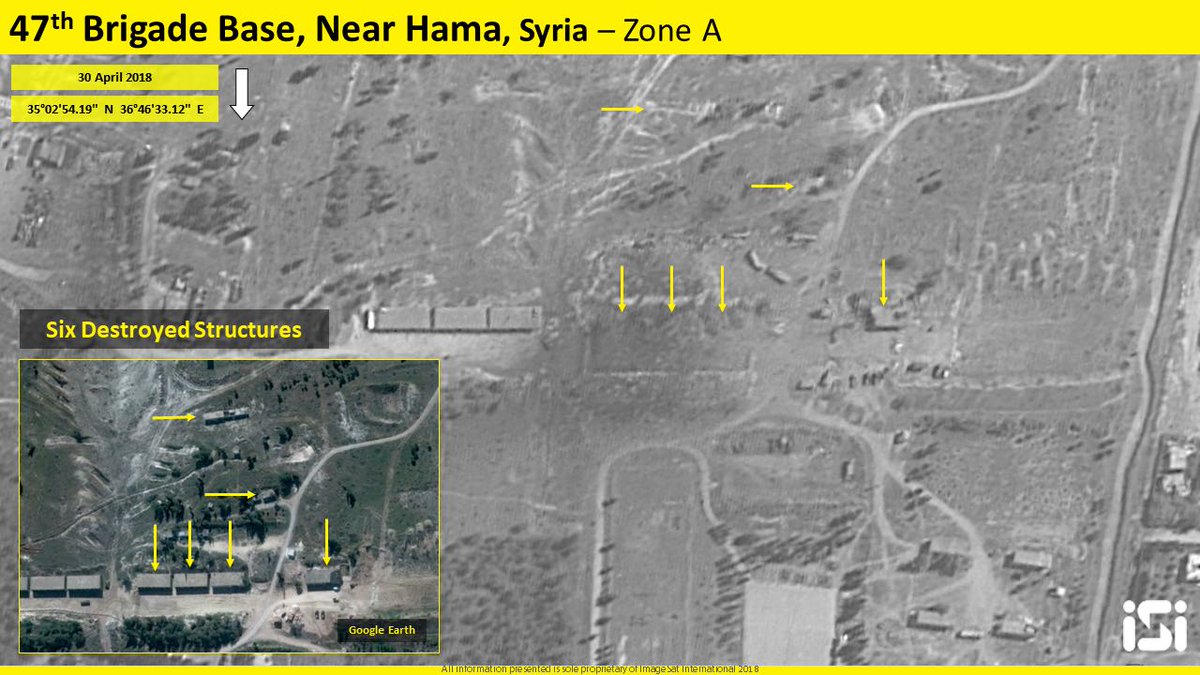

 photo
photo



